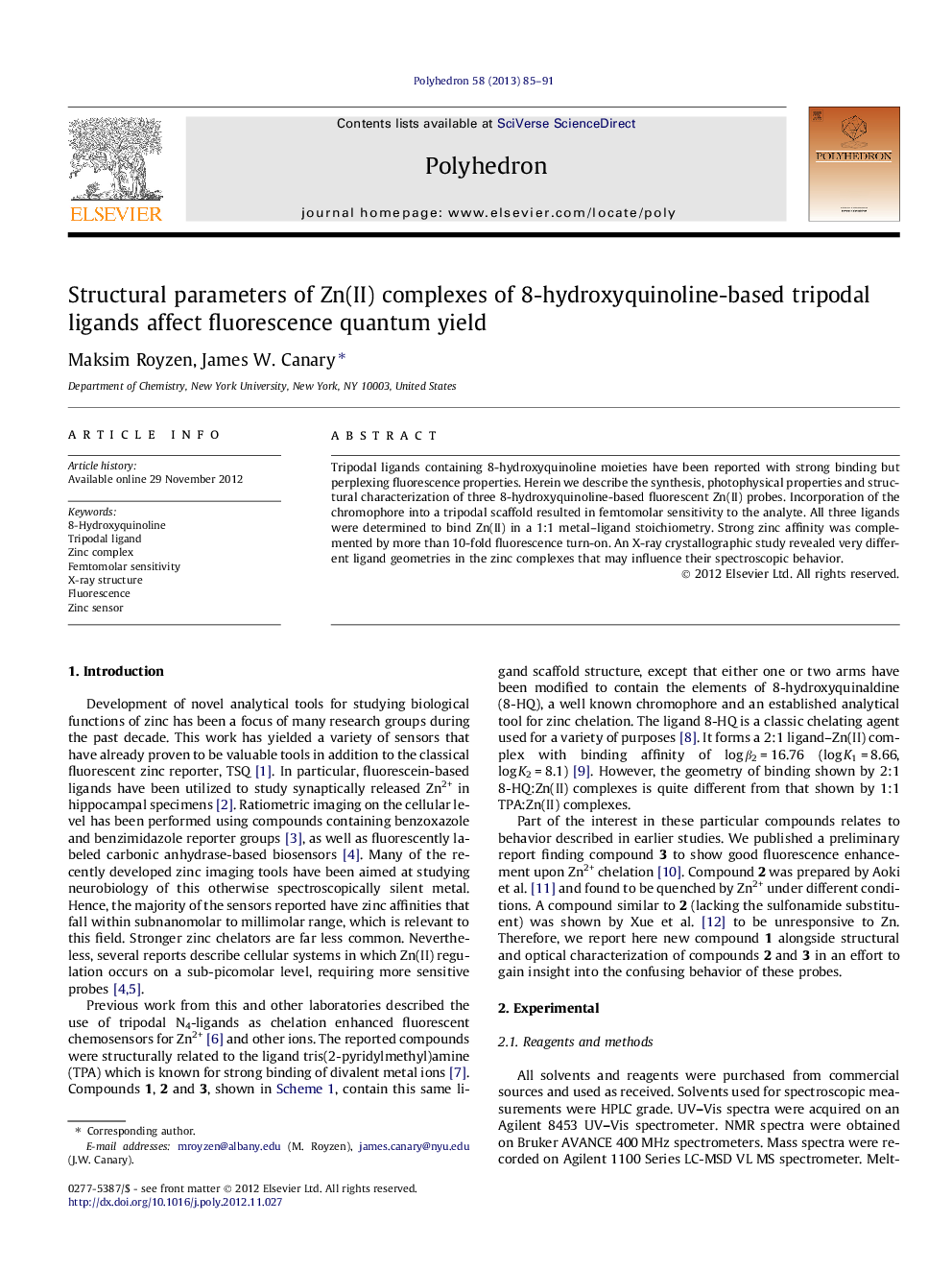| کد مقاله | کد نشریه | سال انتشار | مقاله انگلیسی | نسخه تمام متن |
|---|---|---|---|---|
| 1334548 | 1500281 | 2013 | 7 صفحه PDF | دانلود رایگان |

Tripodal ligands containing 8-hydroxyquinoline moieties have been reported with strong binding but perplexing fluorescence properties. Herein we describe the synthesis, photophysical properties and structural characterization of three 8-hydroxyquinoline-based fluorescent Zn(II) probes. Incorporation of the chromophore into a tripodal scaffold resulted in femtomolar sensitivity to the analyte. All three ligands were determined to bind Zn(II) in a 1:1 metal–ligand stoichiometry. Strong zinc affinity was complemented by more than 10-fold fluorescence turn-on. An X-ray crystallographic study revealed very different ligand geometries in the zinc complexes that may influence their spectroscopic behavior.
Herein we describe the synthesis, photophysical properties and structural characterization of three 8-hydroxyquinoline-based fluorescent Zn(II) probes. Structural parameters of the Zn(II) complexes affect fluorescence quantum yields.Figure optionsDownload as PowerPoint slideHighlights
► Tripodal ligands with femtomolar zinc affinity.
► X-ray crystal structures of zinc complexes of the 8-hydroxyquinoline-based tripodal ligands.
► Photophysical properties of the 8-hydroxyquinoline-based tripodal ligands and their zinc complexes.
Journal: Polyhedron - Volume 58, 13 July 2013, Pages 85–91